While most people know that students were killed at Kent State in 1970, very few know about the murder of students at Jackson State (1970) and even less about South Carolina State College in Orangeburg (1968).
On Feb. 8, 1968, 28 students were injured and three were killed — most shot in the back by the state police while involved in a peaceful protest in Orangeburg, South Carolina. One of the by-standers, Cleveland Sellers, was arrested for inciting a riot and sentenced to a year in prison. Later serving as president of Voorhees College, he was the only person to do time.
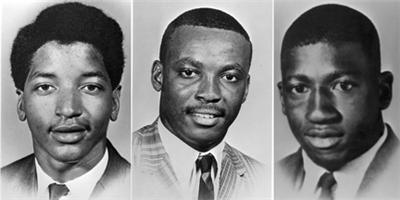
The three young men who were murdered: Henry Smith and Samuel Hammond, both SCSU students, and Delano Middleton, a local student at Wilkinson High School.
Background
In 1968, although home to two Black colleges and a majority Black population, Orangeburg’s economic and political power remained exclusively in the hands of whites. When a Black Vietnam War veteran was denied access to a nearby bowling alley, one of the last segregated facilities in town, 300 protesters from South Carolina State College and Claflin University converged on the alley in a non-violent demonstration. A melee with the police ensued during which police beat two female students; the incensed students then smashed the windows of white-owned businesses along the route back to campus. The Governor sent in the state police and National Guard.
By the late evening of Feb. 8, army tanks and over 100 heavily armed law enforcement officers had cordoned off the campus; 450 more had been stationed downtown. About 200 students milled around a bonfire on S.C. State’s campus; a fire truck with armed escort was sent in. Without warning the crackle of shotgun fire shattered the cold night air. It lasted less than ten seconds. When it was over, twenty-eight students lay on State’s campus with multiple buckshot wounds; three others had been killed. Almost all were shot in the back or side. Students and police vividly describe what they experienced that night.
Journalists remember that the Governor and law enforcement officials on the scene claimed police had fired in self-defense. The Associated Press’ initial account, carried in newspapers the morning after the shooting, misreported what happened as “an exchange of gunfire.” The source, an AP photographer on the scene, subsequently revealed that he heard no gunfire from the campus.
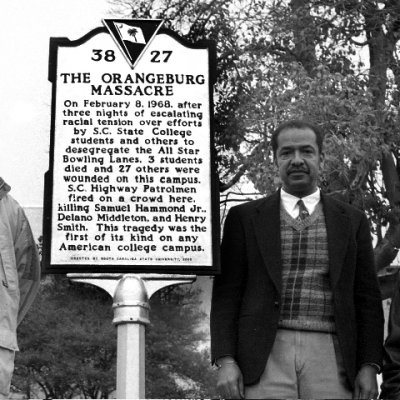
Cleveland Sellers stands beside the historic marker on the S.C. State University campus at the 2000 Orangeburg memorial. By Cecil Williams.
In Orangeburg, police fingered Cleveland Sellers as the inevitable “outside agitator” who, they claimed, had incited the students. Twenty-three years old, he had returned home, leaving his position as Student Nonviolent Coordinating Committee (SNCC) program director, to organize black consciousness groups on South Carolina campuses. Sellers had already attracted the attention of law enforcement officials as a friend of SNCC head Stokely Carmichael, who had frightened many Americans with his call for “Black Power.” Carmichael’s ideas articulated the Movement’s shift from a focus on integration to one of gaining political and economic power within the black community.
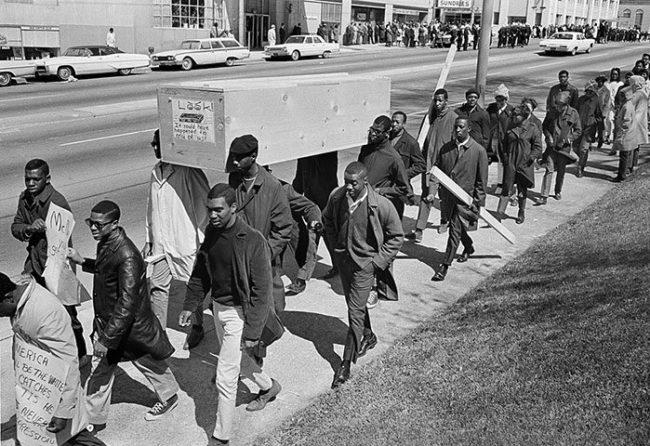
Demonstrators protest the shootings.
South Carolina officials saw Sellers as a direct challenge to their power. Wounded in the massacre, Sellers was arrested at the hospital and charged with “inciting to riot.” Though students made clear he was only minimally involved with their demonstrations, Sellers was tried and sentenced to one year of hard labor. He was finally pardoned 23 years after the incident. The U.S. Justice Department charged the nine police officers who admitted shooting that night with abuse of power. However, neither of two South Carolina juries would uphold the charges. [Description from California Newsreel.]
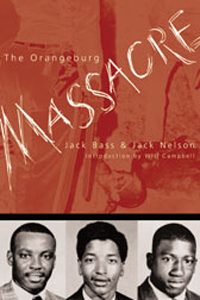 Related Resources
Related Resources
- Scarred Justice: The Orangeburg Massacre 1968 is an excellent documentary which brings to light this untold story of the Civil Rights Movement including candid interviews with many of those involved in the event: students, journalists, officers on the scene, and the then-Governor. The film also provides students with a good understanding of the concept of Black Power in the context of the Civil Rights Movement.
- The Orangeburg Massacre by Jack Bass and Jack Nelson
- A Brother Lost to the Civil Rights Struggle. A Storycorps interview with Samuel Hammond Jr.’s sisters.
- 40 Years Ago: Police Kill Two Students at Jackson State in Mississippi, Ten Days After Kent State Killings. Interview with witness Gene Young on Democracy Now!
- 1968, Forty Years Later: A Look Back at the Orangeburg Massacre When SC Police Opened Fire on Black Students Protesting Segregation. Interview with Cleveland Sellers on Democracy Now!
- More resources below.


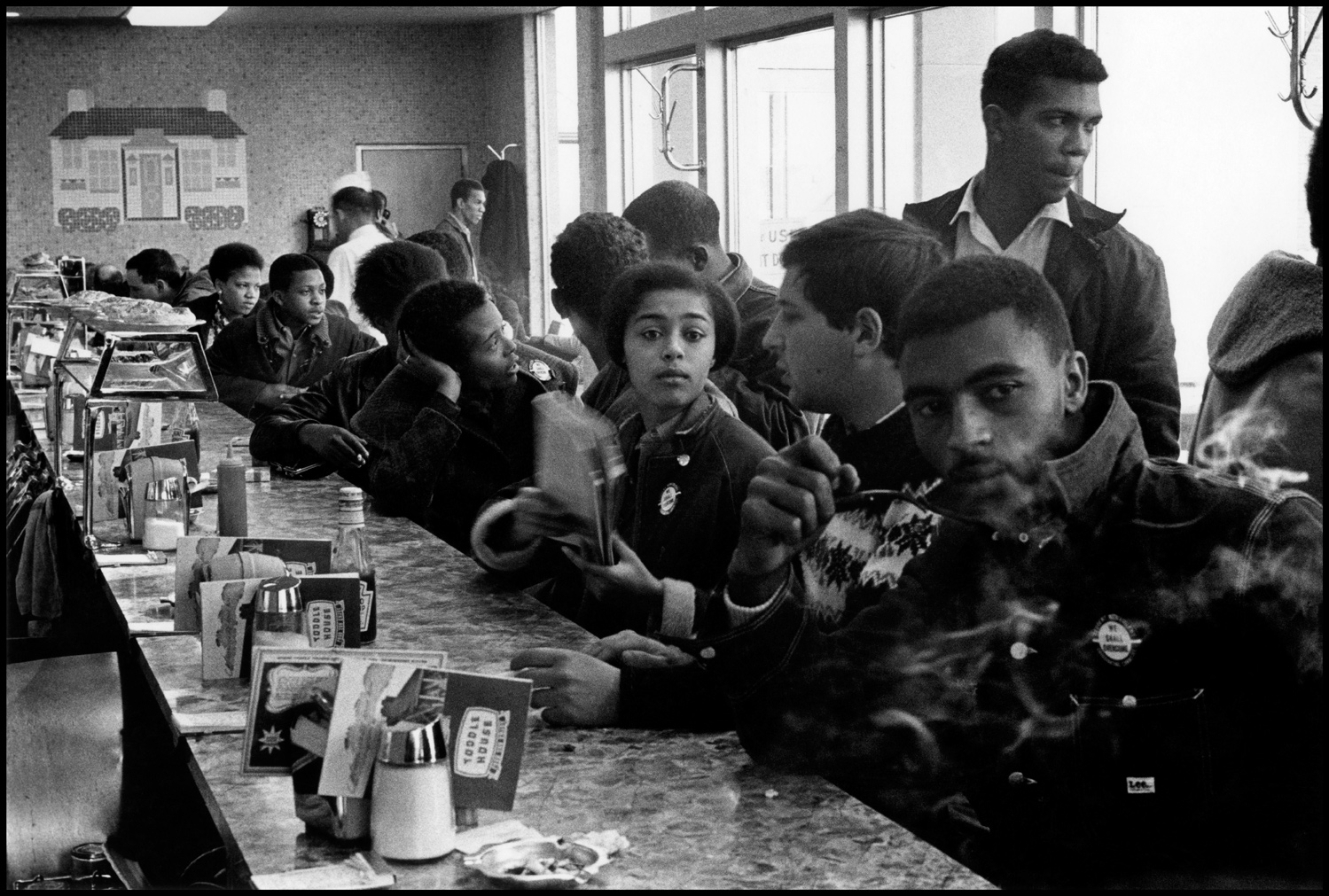
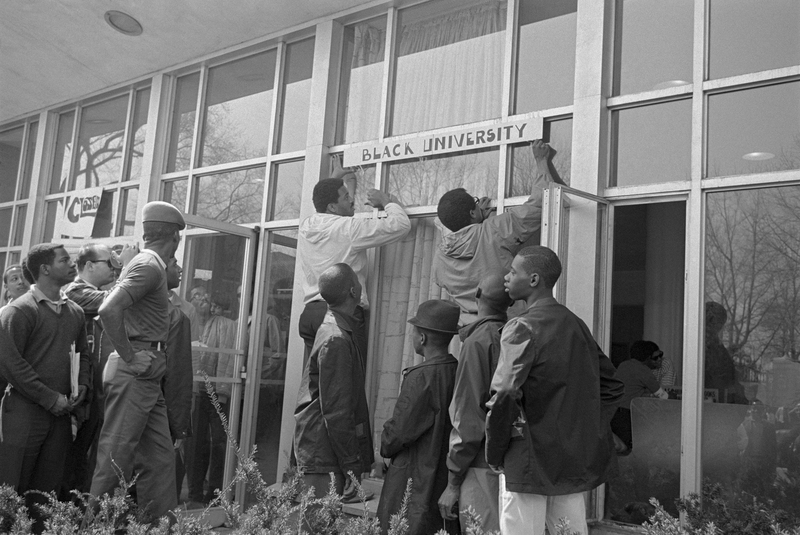

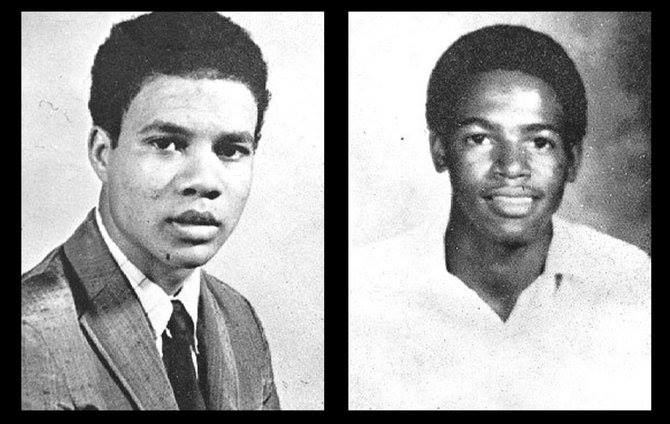
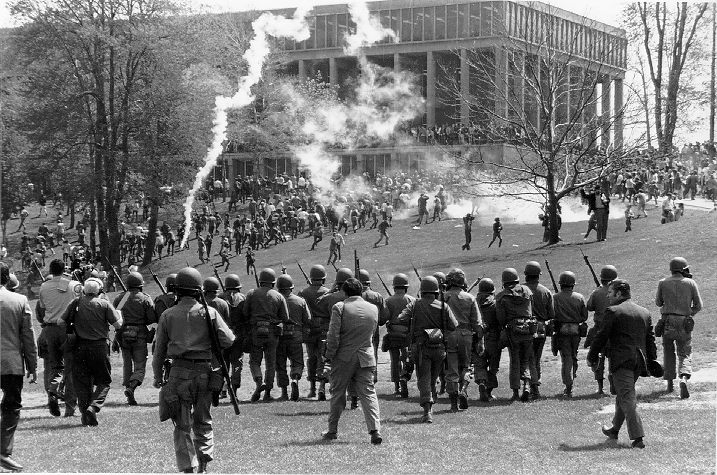





Twitter
Google plus
LinkedIn